The Beginnings of the Olman Family in the Mullewa /Tenindewa areas – as supplied by Lindsay Olman (2015)
Archibald Alfred Alexander Olman
The Davies family came to Mullewa in 1926, after selling their farm in Tambellup. Charlie and Ellen Davis with their seven children, Gordon, Reuben, Dolly, Norman, Donald, Keith and Charlie settled on land 11 miles north of Mullewa which had 200 acres cleared and they named the property “Wenmilla”. However, today, the property carries the name “Speyside” being renamed after it was sold to English investors in 1968.
Archie Olman, at the age of 20 years, followed the Davies family migration the following year in 1927. Archie was fresh out of Narrogin Agricultural College, where he was dux of that renowned school in 1923 and where he was awarded a diploma in agriculture. Archie departed Broomhill en-route to Mullewa riding a Harley Davidson motorbike with 7 suitcases strapped to it. Later he often related the story of that epic journey and he especially joked of the multitude of gates he had to open and shut as the track he chose to Mullewa from Broomhill simply followed the railway line.
Carving out a Farm
Archie took up land in about 1934 north east of the Davis “Wenmilla” acquisition on an allocation known as “Tarka”. Interestingly, where he made his semi-permanent camp was a tree that had the marking F_2 cut into it, and very possibly, this was the marking indicating Forrest’s number 2 camp site on his 3rd exploration expedition. That marking would have been cut by John Forrest and his brother Alexander in association with their team in very early April 1874. (Probably April the 3rd of that year) The purpose of that expedition was to find and examine the area associated with the headwaters of the Murchison River.
Other settlers to that area at that time were the four Fogliani brothers, the Angels and the Marshals. Typical of the times, one by one, they all abandoned these holdings in the Great Depression and as a result a gentleman named Leo Thomas acquired and consolidated all those selections and they are now known as “Tutawa”. We absorb such “snippets” of history today with a brief sigh but just imagine for a second the sadness and heartache that would have preceded the decisions associated with these abandonments and of those final moves! Sickening investment by way of sweat and hope just “trashed” as we would say today and not to mention the loss of a whole of life’s monetary savings for many!! The only redeeming feature would have been/is that it was happening to hundreds of thousands of similar people all over the country and indeed all over the world during those desperate years between the “Wars”
Fortunately the Olmans managed to swim against the tide but only just as we will discover later in this story but firstly to the foundations of the family locally. In 1931 Archie, aged 24, married Dolly Davies. Dolly was aged 29. They produced four sons in Vernon, born in 1932, Ralph born 1935, Lindsay born 1937and Laurie born 1940.

Dolly outside the first camp in 1931
Great risk and sacrifice was the order of the day for these big hearted agricultural pioneers. An example of this was during the period that Archie was scrub rolling “Tarka” using a 2-ton Holt track-tractor and scrub roller a tree branch fell over the tractor and pinned his foot on the clutch pedal, immobilizing both himself and the machine. Wife Doris sensing something was amiss went over to her father’s place next door for help. Charlie Davies went immediately into the search and fortuitously found Archie quite quickly. Charlie proceeded to disentangle the offending branch however the injury (probably lack of blood flow) had damaged his left instep and he had issues with it for the rest of his life. Insult was added to this injury, so to speak, when he burnt the area prior to cropping. The fire (they were always planned for the hottest of days for maximum effect) escaped, seemingly because of the abundance of highly combustible spinifex that had thrived in that area in that year and what a ferocious fire it was! Archie and his helper had to run for their lives and luckily there was a large “crab-hole” in a naturally cleared clay pan which they found and managed to shelter in while the fire passed. Years later he was recounting this incident in regard to “his life’s close calls” and candidly volunteered the fact that he really thought “this was it” but despite the fact we know it wasn’t, we can probably deduct it was most likely the “hottest” day of his life.
That crop turned out to be a “12 bagger” (2.4 tonne per hectare). In fact it was what in those days was referred to as an absolute “barn-burster.” Questioned as to why he took up land in that place he said his research had indicated the isotopes suggested it consistently rained there and most definitely it did as one of his son’s Lindsay was to find in later years. This area is north-west of Pindar and many years later son Lindsay cleared 10,000 acres (4,000 hectares) in this patch and further, he discovered and perfected a different style of farming specific to that country which was, absolute, to success there. That was in the decade of the 1970’s.
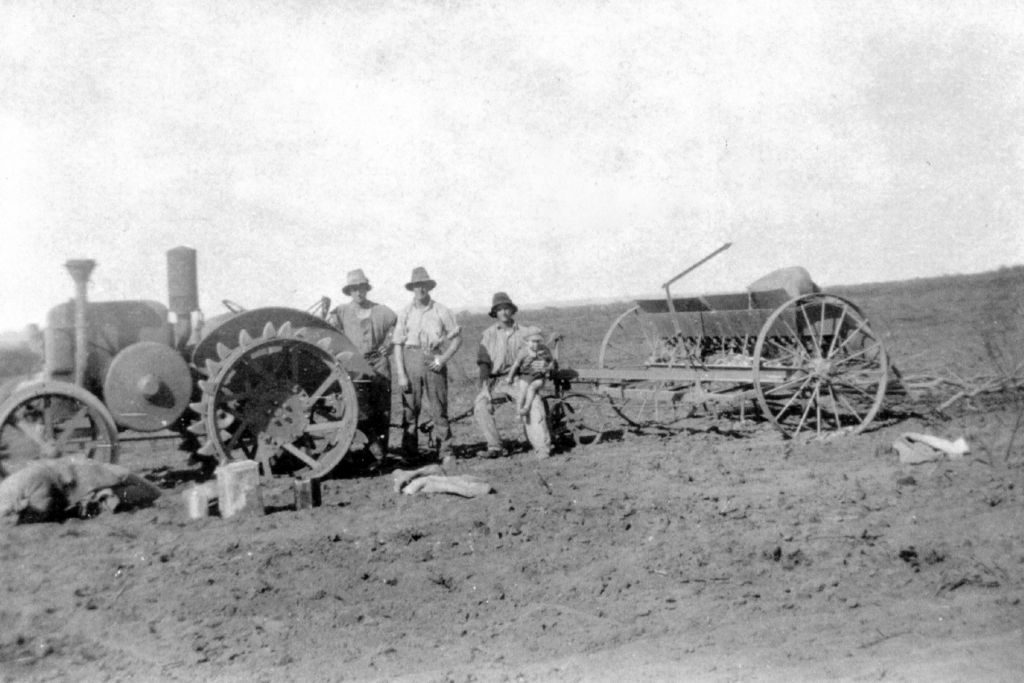
Archie Olman, Norm Davies, Charlie Davies and the small boy is Vern Olman. The tractor is a Lanz and the drill is a 16 run Massey Harris
Another move another Farm
Meanwhile Archie and Dolly moved to North Tenindewa in 1933 and it all started again on land share-farmed on the Greenough River next to “Campbell’s” These share arrangements were such that the owner supplied the land and possibly some other inputs and the contracting party (Archie) supplied most of the labor, the seed, the fertilizer and machinery. A major part of the task, in this case, would have been rolling, burning and preparing of the land for its first crop which was an enormous undertaking and, in its magnitude almost impossible to convey in words, as to the man-power and self-sacrifice required. But Archie persevered and in the initial year sowed his 960 acre paddock in one piece, most likely using a 28 run disc drill and a 15/30 International tractor with steel wheels fitted with what were called “McGregor Grips”. No plowing was required so he direct drilled the crop. When harvest time came he employed a Scottish immigrant to operate the harvester. Enter a gentleman named Bill McCartney (soon to become a permanent resident and farmer in his own right) and the one thing this pale Scot wanted was a sun-tan. So he stripped to the waist ignoring all better advice however what he failed to account for was the circumference of a 960 acre paddock. It was “long” in both time and miles and Bill was toasted on all sides when he completed that first lap. As a result Bill could not work for a week. This incident took place on the farm owned by the Parkers which Archie had essentially cleared and cropped on shares as described. (These days owned by Neil and Brian McCartney) Seed was obtained from a Mr. Bob Oldham of Indarra on an arrangement of “to pay cash or in kind”. Bob thought the price of wheat the following year would go up but unfortunately for him it went seriously down as the depression took hold.
Archie and Doris continued to live on the Parker farm for some years as there was a reasonable house there at that time and 200 acres (80 hectares) had previously been cleared. Little is known of the owner Parker but a clue may be that in 1927 when Archie arrived in Mullewa there were floods from huge summer rains and thus there were a numbers of farmers arriving to acquire good, cheap, land that was conducive to relatively cheap clearing. Many were from the Katanning area and included the O’Briens, “Kockatea Bill” as he was known was one and also Mr Hugh Diprose and son Stan another name that became part of Mullewa fabric.
Previous to farming in their own right and on their own land Archie had found work “nicking trees” in front of the scrub roller. This adjunct to clearing was adopted in those times so the trees broke off easier when the roller went over them. Later bigger tractors with more horsepower rendered this practice unnecessary. He also cut fence posts and dug wells. One well was dug on the Christian Brothers Agricultural School at Tardun and another on Marlingu and there were others. Any other work he could find he accepted as money was tight. The results of the years 1933 and 1934 are unclear but what we do know about 1934 was there was wheat-rust around which probably added to his woes and those of many others.

A 2 Ton Caterpillar at Tenindewa 1950’s
Archie and family moved again and this time to South Tenindewa which was in 1938 and this time to “Wattle Grove” farm (near the western end of what is known as Olman Road these days) and entered into a share farm arrangement with the then owner Mr. Mathews. Archie also share-farmed for a Mr.William Peet who owned the adjoining property on the east of “Wattle Grove”. There was a horse team on the new property when they took it over but as he owned the modern 15/30 tractor he had no need for these horses and they were on-sold to Mr. Frank Keeffe. (This property is owned today by Geoff and Jenny O’Brien and son Michael as is Mt Rooney to the south)
Sailing close to the Wind
Times were getting tougher and this is evidenced by the extreme actions of some Banks. The Commercial Bank of Australia and the W.A Agricultural Bank supplied some money on a “subsistence program” in a desperate attempt to keep the farmers on the land. Further the Farmers Debts Adjustment Act was established with included good points and some argued, many devastating points, and of which at least some were weary! Essentially farmers only had to pay 2 shillings in the pound (10 cents in the Dollar) and debts were written off. But the devil was in the detail according to Archie and he was not impressed and thus did not avail himself but chose instead to become a “Bankrupt” and paid his debts as he could in later years. However, when the move to Wattle Grove farm eventuated, this deliberate bankruptcy strategy had consequence when he discovered he could not legally do business or raise finance in his own name. So it was, a company was set up with the signatories Francis Athol Bell together with Archie’s wife Doris Olman to trade as Mathews and Co to raise the necessary finance to farm Wattle grove and share farm Peet’s property on the eastern side. This company was successfully operated until 1955 but then disbanded in favour of a new company under the name of Archie Alexander Olman and Doris Olman to trade as A and D Olman in 1956. But the Banks persisted and this time by trying to repossess his machinery as he owed 80 pounds ($160) in total on those assets. So again William Mathews paid that debt and fortuitously for all, the Olman’s first crop on Wattle Grove yielded 12 bags to the acre. (2.4 tonne per hectare) As the year but one previous, that is, 1936 at Parkers had been a good year for them as well with some 8 bags to the acre being harvested (1.6 tonne/hectare) things were coming together.
Archie by this time had acquired a 1 ton International truck which he generally loaded at harvest time with 13 bags of wheat (1 tonne), considered by the owner and others, as a fair sized load for a motor-truck in the 1930’s! He carted many similar loads to Tenindewa’s new Co-op Bulk Handling storage including the very first load to go into the new Bulk Storage. (Opened in 1936). After unloading one such load into the very modern hoppers of the day, he, on one occasion, ran around to the door of the bulkhead to observe how big a pile of wheat resulted. When recounting his wheat carting exploits years later, he remarked to his son’s that “it was not a very impressive pile”.
Archie eventually bought the property at Tenindewa in 1947 just before the legendry “pound for pound” wool price era took hold in Australia and consequently as a result of the astonishing boom in wool prices, in that fleeting period, he was able to pay for the farm in the first year.
Again Archie was one of the first to acquire a rubber tired tractor which was an International W30 and by now it was 1940. There is an adage in business of the pitfalls of “being first to market” and initially it applied here. There was a lot of trouble with these new inflatable rubber tyres as they were designed to be operated at low inflation (for grip) and as a result the valves had a habit of pulling off which was not an easy job to repair in those days and tempers often frayed! Archie however was not deterred and went on to buy a further 2500 acres (1000 Hectares) of un-cleared bush immediately south of Wattle Grove from the Meadowcroft Bros in 1950 and proceeded to clear and improve that property. It was known as Mt. Rooney.
Wattle Grove
The original house on “Wattle Grove” was a 4 room weatherboard building which was intriguingly” chained down”. This was Archie’s slightly unconventional strategy to prevent the frequent summer phenomena of cock-eyed bobs (mini tornados) from destroying the house. This house had a tall saltbush hedge around it on three sides. Eventually a decision was made to build a new house and this time with cement bricks. These bricks were to be made “on site” and the task was started in 1949. Ralph was the chief brick maker and Lindsay the chief cement mixer. Water was from the only source which was a nearby well which tested out at 600 grains of salt but despite this, remarkably, though abandoned, the house still stands sturdily to this day. The bricks were 18 inches x 8 x 6 (460mm X 200mm X 150mm) and weighed 90 pounds each (41Kg); the rudimentary cement mixer was a work of art. It consisted of a heavy duty 44 gallon drum (200 litre) with plain bearings each end on a tripod and driven with a flat belt (temporarily pilfered from the AL harvester) via the PTO of the W 30 tractor. (Consequently no bricks were made while harvest was in progress!)
Ralph and Lindsay both were attending school at the time in Mullewa but on a daily basis as soon as they got home, and on every weekend and holiday, if the cement was not mixed precisely and on time there was trouble! Ralph was meticulous and the bricks were wet down and covered with wet bags to cure. Sand was carted from the creek known as Kockatea Creek to the south of the homestead and gravel from “Dead Man’s Bend” west of “Critch’s” gate. It was fortuously discovered they had to be very careful loading that gravel because the Road Board (The Shire Council) had previously used “jelly” (gelignite) to loosen the gravel and on odd occasions the shot firer did not count the “bangs” accurately against the number of charges laid and as a result the Olmans would periodically discover an unexploded “stick” (of gelignite) on the end of a shovel. No denying it was all hard work as there was only the three of them. Vernon was out contract fencing at that time on a property owned by Mr. Morrie and Jack Callaghan west of Mullewa and which, incidentally, he later purchased and in fact is where son Ian lives today.
Eventually the new “Wattle Grove” house was finished in 1951 and it had taken two and half years to build. All the stone that was needed came from Fogliani’s just to the east of the Mullewa Township and as you can imagine says Lindsay “it was not real good fun on a hot day and with plenty of double gees and no such thing as gloves”. The house builders were a Mr. Arthur Osborne from Walkaway (he had the store there) with his 2 sons Ian and Dallas.
Unfortunately the Olman’s new home had only a short period of complete family bliss as sadly mother Doris passed away suddenly on September 4th 1964 at the age of just 62 years. Archie soldiered on for another 10 years and then he too passed away after a long illness in December of 1974. He was aged 66. Two wonderful and stoic Mullewa pioneers had passed on leaving the district much the poorer. However from such humble beginnings, they had left their family with solid foundations to establish their futures.
Different Directions
Leading up to this sad juncture in the Olman family’s establishment in Mullewa Ralph decided to leave the farm (1953) as there was, as is almost expected in families, some “disparity of views” between brothers. Ralph went north to Carnarvon where he worked for the now famous conglomerate but the then fledgling cooperative in “Wesfarmers”. Then onto Darwin which is where he met his, soon to be, wife Valda Chapman and they returned to the farm in 1963. Ralph and Val were blessed with 7 children and in turn those seven have gone on to become, at last count, a total of 100 grand and great-grand kids. (2015) “Arab” as he is affectionately known and wife Val have been somewhat adventurers in enterprise taking on everything from goldmining to farming to trucking, not always with stunning success, but most definitely, always with a smile.
In 1950 Vernon ventured into wheat growing in his own right and sowed a crop on the 460 acres cleared on Mt Rooney. With a Caterpillar 22 and a 10 disc sunder-seeder which because of its very small size and the nature of the task took 6 weeks to sow. What would have looked slightly odd about this is that the crop was 9 inches high on the outside of the field before it was finally seeded in the center!! Lindsay drove the seeder and in that year he (Vern) acted as the hydraulics on this rudimentary implement. (i.e. he adjusted the height of the 10 disk sunder-seeder with just man-power). Additionally Vern, in the years 1950 and 1951, share-farmed at Nathan Rumble’s property just east of Tenindewa and then went on to buy Callaghan’s property in January 1954. By this time Laurie had married Miss Ann Lindup in 1961 and they went on to have three daughters. Thus further acquisition transpired in 1962 when Archie and Vern took on the Stan Diproses property in 1962. This property was subsequently split to make way for youngest brother Laurie to enter agriculture and he farmed it until he contracted a serious brain tumor to which he tragically succumbed and passed away in September 1992 at the age of 52 years. The property was then acquired by Mr. Michael and Coralie Doherty of Cunderdin in 1980 and farmed by that family up until 2012. It is currently leased to the Tropiano Family.
Vernon meantime had married local girl Gwen O’Donnell in September 1959 and that partnership produced one son in Ian and three daughters including Janine who with husband Anthony Crudeli runs a very successful Auto-Repair shop in Mullewa to this day. Sharon became Mrs. Terrence O’Donnell and Linda married Phillip McCagh who is currently the State Manager of the grain-trading company Emerald. Emerald is a subsidiary of the Japanese company Summitomo.
Laurie and Anne’s daughters are Shauna-Lee who is married to Mathew Wallace, Michelle is married to Michael Docker and Pipa-Jane’s partner is Martin Neale.
Predictably, because of his free spirited nature, Lindsay eventually departed “Wattle Grove” and worked around the area for some time and progressed to shearing. He soon discovered that life on one hand was a challenge, but also soon found in his words “that mother had given me a very special gift, she had in fact given me the world”. And what a fantastic world that turned out to be for Lindsay. Motor-bikes were the initial attraction however he soon discovered, after a “deathly experience” that motor bikes were something to be avoided. He consequently quickly transitioned to four wheels and purchased his first of many cars in 1957. Career wise Lindsay, assisted by a wonderful temperament became an outstanding shearer. During his heyday he shore sheep all along the south coast of Australia from WA via South Australia and into Victoria. During this “prodigal period” he did manage to return to the Mullewa and the Geraldton areas, occasionally to visit family and friends, and sometimes sheared at local sheds, especially when it was too wet on the south coast.
It’s not all Work
Like many shearers Lindsay’s working life was full of humorous incidents that when related later seems to grow more awesome as the year’s progress!! He describes such an incident that took place in the mid-1960s.”When thinking of my shearing days” he recalls “I am reminded of many stories that bring a laugh, and one was shearing at Kevin Critch’s shed with two colorful gentlemen in Henry Stokes and the other was John Sheldon. As it was a Friday they both wanted to go to Geraldton and pestered me at length to take them. I personally did not want to go as I had just spent a lot of money on super-charging the motor in my Triumph TR3 sports car plus also fitted a racing camshaft which had taken the engine displacement from 1.8 liters to 2.2 liters”.
Now Lindsay was “fractionally” notorious for his need to speed and at this point had no idea how fast this retrofitted car could go. “These cars were small and weighed less than a ton (900 kg) and thus they were sleek and fast, so after tea I relented and told them to get in. It is only about 45 miles (72 Km) from Critch’s to Geraldton, but, on the other hand, in those days it was just a one lane highway and not really thought of as a fast road. When we got from the farm road to the Main Road, Henry and John were both rolling cigarettes. I pointed the nose (of the car) west and planted the foot, pulling the super charger switch in at 3000 rpm which took our speed to 100 mph (160 kph). We shot through “Dead Man’s Bend” at enormous speed and by this time all conversation had ceased. I had also just fitted a set of Pirelli radial tires, which had to be ordered special. These tires hung on to the road like glue thus we had a good run. When I pulled up at the Queens Hotel I noted to my amusement my passengers were still shakily attempting to roll those very same cigarettes? Rita Cross, the then proprietress, asked Henry was he was feeling a little car-sick as she seemingly noted his unsteadiness and that he could not hold a pen adequate to write a cheque? In reply Henry was heard to remark “Madam the trip was so fast that one minute I was focusing on wheat fields and the next minute they were tomato gardens!!” When asked “was the paint still on the car”? Henry suggested in reply “possibly not as the 45 mile trip took (according to him) a little over 20 minutes.”” Lindsay went on to race these type cars in various races at the Caversham circuit near Perth. The most grueling of these he participated in was the 6 hour “Le Mons” which was both taxing for man and machine. Obviously he survived!
A little while after that episode that car was electrically timed on the Albany airstrip over a measured mile and clocked 144mph. (232 kph) Lindsay as a consequence named that car “SPUTNIK” as at that time the world was being amazed by the Russian space vehicles that were hurtling through the night sky at the beginning of what was termed the “International Space Race”. These space vehicles soberingly added another frightening dimension to the already electric “Cold War” which was raging between the West (USA and allies) and the Russian dominated East.
“Life was never meant to be dull” according to Lindsay and this played out when he decided to take action over the fact that his wire spoked wheels on his Triumph TR3 were being what we might call “sabotaged”!!. Now it was well known that dogs love to urinate on car wheels but especially it seemed these wheels and unfortunately as they were stainless steel they did accumulate a very grubby appearance. “I decided to implement a deterrent by employing an electrically charged system that shocked these culprits and one that really worked. In truth I was always suspicious, that, there were perpetrators other than dogs offending and especially at the Rocky Gully Pub. On one particular night I connected the device up and went inside and did not have to wait long before an almighty blood curdling howl came from the direction of my car and it sounded nothing like a dog!” In Rocky Gully anyway the urinating incidents dried up and never happened again. “I still contemplate to this day” he says “as to just how painful a lesson that might have been?”
A Rose of Reality
“These are just some of my incidental exploits but life took a more sober turn in mid-1962 when I was wed to a wonderful and delightful lady in Denise Tominey.”“It was a chance meeting as we literally bumped into each other on the corner of Hay Street and Barrack Street in January 1956. She was as pretty as a picture and had a cheeky smile however it was six years before we actually tied the knot”. Lindsay continues “It was somewhat of a long distance romance and I needed those fast cars to shorten the distance between the bush and the city. Denise was living in Perth at the nurses training accommodation and she was extremely serious about her vocation.” In fact Denise went on to become a Sister in Nursing and later on to become Practice Manager for the much loved and long serving doctor-extraordinaire Patrick Docherty in Mullewa. Actually the two were to become life-long friends as well as business associates. Denise finally concluded a long and very distinguished career as “Pharmacist” at the Mullewa Surgery during 2013.
Lindsay and Denise had entered farming in their own right at Pindar in 1968 and initially ran headlong into the infamous “Wheat Quota” period of 1969. As they would have had no wheat production history, or precious little, by which to acquire a viable “wheat quota” they turned to producing barley. “The land was very suitable to barley production and on the edge of one of the headwaters of the Irwin River” explains Lindsay. “It is a wonderful area, rarely short of rain and made up of nice soft red loam. We had a wonderful farming life and very fruitful one. I could not believe the contrast from the sand plain west of Mullewa (Tenindewa) to our farm “Ponderosa” at South Pindar”.
Glasnost and Perestroika
“My foray into Russian tractors (Belarus) was a huge adventure which included travelling to the former Soviet Socialist Republic (F.S.R). Being of Prussian ancestry, the Olman name can be traced back as far as 1275 to its origin and I always felt a special curiosity and pull to that part of the world and particularly to its rich and prosperous past.”
[Prussia was formerly a very powerful and prestigious state of the German Empire that is now (since 1945) absorbed into Germany, Poland and Russia]The story began with in the mid-1980s the trade war on wheat between the U.S.A. and the EU which essentially made us (Australian wheat growers) the proverbial meat in the sandwich, so, I took on the might of the USA. If I could get Russian tractors marketed for a cheap price I could blow the American trading monetary system and render their second hand tractors too expensive for the Australian market. Consequently this action if successful would fill dealer’s yards with overpriced second hand American tractors, so, to the plot! A meeting was set up for me with the appropriate Russian agency in the Gorbachev Administration and it was very fruitful. Eventually and with a cheeky smile they agreed to an amazingly competitive price of $46000 for a 335 HP 4wheel drive Belarus tractor. This was a tractor that was not only economical to run, despite the slightly ugly looks, but importantly worked extremely well in Australian conditions. I was instrumental in selling over 700 in less than 18 months into the Australian market and it was a master stroke in International trade and was especially financially rewarding for Australian farmers.
Making Adjustments
Lindsay was instrumental in setting up an organization named the Rural Action Movement (RAM) in the early 1990s and its associated organization in Bankwatch which was tasked with counseling debt burdened farmers. As its name suggests RAM was born out of the frustration of, particularly Northern and Eastern Wheat- belt farmers, who were fed up with the lack of representation by the then mainstream farm lobby groups. Another spinoff also from RAM was the setting up of United Farmers Fertilizers Cooperative which brought much needed competition to a market pretty much dominated by the Wesfarmers CSPB distributor. Further Lindsay was instrumental in the establishment of S B S (Special Buying Service) and then G.O.P.P (Geraldton Organized Purchasing Power), and was on the first board of GOPP.
The Australian Noodle Wheat Growers Association was launched in the 1990s to help highlight the lack of understanding and inability by the then Single Desk Marketer the Australian Wheat Board (AWB) and to get a price premium for that product. Lindsay was very much involved with this Noodle Growers initiative and it produced modest success for the growers of those wheat (Noodle) varieties.
Single Desk Wheat Marketing in Australia was a federally legislated scheme that had mandatory and monopoly control of virtually all wheat marketing Australia wide. It was born, wrongly or rightly, as a consequence of the “Depression Period” where it was concluded at that time by growers and others that the “Multinationals” were colluding on the prices of soft commodities and especially on wheat. The Single Desk System was devised, implemented and legislated and slowly but surely became a sacrosanct system (untouchable) to most wheat farmers over the next 80 years. However, it had one very notable and recognized farmer detractor/critic and he resided in Western Australia.
The Single Desk Scheme’s demise is a book in itself (there is at least one already written) and made International headlines at times when it started to unravel but Lindsay was early to see its flaws and its inequities and early to the fight. He single-handedly and at times but, always, courageously spearheaded the cause back to a free market system. “Breaking down the Single Desk and the national pool meant so much for the West Australian farmers” he states. Clearly he was right and this was very much evidenced by the almost unanimous refusal of WA wheat producers and their representative organizations (PGA and WA Farmers) during 2013 Wheat Exports Australia debate. They refused to budge even fractionally when pressured by the East Coast lobby to consider returning to any part of the old system. This remarkable and historic turnaround in marketing philosophy and sentiment by growers has occurred in just seven short years and is surely somewhat of recompense to those lonely years Lindsay spent on that campaign trail.
A dally with the Dancer
Toward the end of his “free market” crusade he suddenly had a struggle with another much more personal and deadly issue. With Denise’s medical background and her dedication coupled with Lindsay’s special “never say die” attitude he fought off serious cancer tumors contracted in mid-2000. Even more remarkably he then, only as Lindsay would, survived a full blown lightning strike which would have killed many but it did however, permanently damage his hearing. Now in retirement none of the above events have dampened his lifelong romance with agricultural or damaged his trade-mark gifts of humor and generosity.
Long Service Leave
“I never wanted to be a farmer” says Lindsay. “I grew to love it, invent for it and change it”
But these heartfelt words towards his much loved farm sum it all up;
“The place where I belong, where I grew up and where I was free. The place where freedom existed, happiness flourished, imagination increased, it was the farm, “Ponderosa Estate”. Not a house, nor a shed, or simply a field full of bread but a place where love and passion never ceased to be said. Gone, but never forgotten (1968—-2013)”
(This little poem was written by granddaughter Siquoia, Natalie’s eldest)
Denise and Lindsay have produced two delightful daughters in Desiree and Natalie and consequently they have three granddaughters and one grandson
Lindsay concludes; “We all loved the farm. I did a number of things that were considered out of the square including a continuous cropping rotation of wheat on wheat on wheat for 48 years on the first cleared area and with no real side effects. I used trace elements every year with Molybdenum being to the fore so as to put back what I took out, plus some. I installed a lot of contour banks and drains to control the sometimes heavy rainfall. Coupled with planting trees to create wild-life corridors they worked a treat”.
“My first seeding plant was 3 X 14 disc seeder-ploughs hitched together and pulled by a trailing-tandem set of International tractors (Models super AWD 6) Then on to a Massey Ferguson 178 attached to a 24 disc plough directly hitched in front of a 24 disc drill which proved to be a wonderful combination. Most farmers at Pindar used this method initially and eventually moved on to various other combinations. Some launched into air-seeders of various makes as we did and eventually finished our farming years with a Steiger Tiger 600 HP pulling two identical air-seeder boxes in trailing-tandem in front of a 60 ft Flexicoil bar. What a convoy but this outfit seeded as many acres in minutes as it took all day to seed in 1950”
“The Ponderosa farm is located on one of the heads of the Irwin River and graced with nice red loamy, easy to work soils with good W.U.E. Our modus-operandi was when machinery was not up to scratch it got modified. For example one particular cultivator bar got converted to hydraulic tynes from spring tynes. This required another innovation by way of an automatic pressure control unit to govern the pressure breakout because the tynes only had 16mm pivot pins. This modified cultivator-bar was in use for a number of years on the home farm and is still operational at Three Springs. Two different size air-seeders called for a unique filling system which required an auger mounted on the left side of the truck which was raised hydraulically. It too worked a treat.”
The property (Ponderosa) is now owned by Mr. Geoff Fordham and his family
More lately Lindsay and Denise also became restaurateurs for a time and in the late 90s they were involved in the “Montego’s on the Bay” and “Champion House” or “Tides” restaurant as it is today
“Success is to be measured, not so much by the position one has reached in life, but by the obstacles which one has overcome while trying to succeed” concludes Lindsay
………………………………………………………………………………………………………………………………………………………………………..
Eulogy for Lindsay Olman
18th of March 1937 —–27th of February 2020
Geraldton Crematorium Chapel
Tony Critch
I need to say at the outset it is a great honour to say these few words. Thank you Denise, and daughters Desiree and Natalie for entrusting me with this duty today.
If I may… I will deliver this as best I can from the view point of and on behalf of the Agricultural Community of this area as a tribute to Lindsay for his enduring contribution to Industry near… and far.
Reflecting on his farming career and his contribution to agriculture generally, I would categorize that contribution as per the following
…..colourful, cheerful creative, confident and extremely courageous and I’ll attempt to enlarge on those aspects as we progress
Ladies and gentleman the next few minutes is about the Wheat Industry essentially and it has its own jargon and acronyms and at times will be hard to follow….but out of respect to Lindsay the following words are words that must be said… so don’t be too concerned about not understanding all the detail please.
Lindsay was a late starter to wheat farming as we have learned from Rhiannon (Piesse) in her earlier tribute, he was 31 before he and Denise turned their first sod at Pindar, and, also as outlined by Rhiannon, as luck would have it the couple ran headlong into the 1969 Wheat Quota fiasco
Essentially these Wheat Quotas were a strategy by the Australian Wheat Growers Federation and the Government to help curb world over-production of the commodity and thus growers were given a tonnage quota that they were allowed to produce, which was tough enough for most, but the devil was in the detail. You’re “quota” was based/estimated on the tonnes you had produced over the preceding years and of course Lindsay and Denise, at that point in time, didn’t have a single tonne on the board so to speak. Consequentially they were allocated a quota of zero tonnes.
To give that event some relevance, we in this place are all very familiar with the establishment of Hutt River Province and the actions of late Prince Lennard. But what some of you might not know is the reason the Prince took this extreme course of action, that is, divorcing himself and his farm from the rest of the Commonwealth of Australia, was to display his disgust with this very same Wheat Quota System. The fallout from that (Hutt River) event is still playing out a half a century later.
Now I am absolutely certain knowing Lindsay as I do…. the only reason he too didn’t take the same course of action as the “Prince” is because he just didn’t think of it at the time. A pity really as the “Principality of Ponderosa” has such a poetic ring to it.
But in typical Lindsay fashion he didn’t get mad, but as many of you know, he just spent the rest of his farming career getting even and especially with the Australian Wheat Growers Federation………………… I will go into detail in a moment but in the interim, Lindsay became extremely good at growing wheat proving he was pre-eminently practical as well as politically astute in matters of the industry he loved
At the outset of this Eulogy I mentioned the words, colourful and courageous, because as a farmer and as a person Lindsay was never frightened to challenge convention. Just because everyone was doing It…. farming wise…. and just because everyone liked “It”… farming wise…. Lindsay would quite often go…..all out…disproving “It”, whatever “It” happened to be. By way of example most farmers in this patch and beyond, were and still are, inclined to favour American machinery as per John Deere and Case or whatever but Lindsay would have none of that and he set about proving that the tractors produced in the Former Soviet Union were a superior dollar value proposition………. and further….. in doing this Lindsay, had an underlying plan to derail the status quo.
Before continuing this eulogy I must explain that in 1997, Lindsay, with the help of both daughters, set about recording the adventures and achievements of the Olman family. I was fortunate enough to be involved in that.
So now. I will quote Lindsay directly and the chapter I quote from is titled, Glasnost and PERESTROIKA. You may recall, they were the political buzz words emanating out of the Russian leadership at the time?
“My foray into Russian tractors (Belarus by name) was a huge adventure which included me travelling to the former Soviet Socialist Republic. Being of Prussian ancestry, the Olman name can be traced back as far as 1275 to its origin and I always felt a special curiosity and pull to that part of the world and particularly to its rich and prosperous past.”
[For the record Prussia was formerly the very powerful and prestigious state of the German Empire but since 1945 it has been absorbed into Germany, Poland and Russia]
“My story began in the mid-1980s with the trade war on wheat between the U.S.A. and the EU which essentially was rendering Australian wheat growers the proverbial meat in the sandwich. So I thought, says Lindsay, if I could get Russian tractors marketed in Australia for a cheap price I could blow the American trading monetary and render their second hand tractors too expensive for the Australian market.
Consequently this action if successful would fill dealer’s yards with overpriced second hand American tractors, and so to the plot”, continues Lindsay.
“A meeting was set up for me with the appropriate Russian agency in the Gorbachev Administration and it was very fruitful. Eventually and with a cheeky smile they agreed to an amazingly competitive price of $46000 for a 335 HP 4 wheel drive Belarus tractor. This was a tractor that was not only economical to run, despite the unsightly looks, but importantly, worked extremely well in Australian conditions. I was instrumental in selling over 700 in less than 18 months into the Australian market and it was a master stroke in International trade and was financially rewarding for Australian farmers”.
End of quote
Lindsay notched up a litany of achievements including involvement in setting up an organization named the Rural Action Movement (RAM) in the nineteen nineties (1990’s) along with its associated organization “Bank-watch” which was an organization tasked with counselling debt burdened farmers. As its name suggests the Rural Action Movement was born out of the frustration of farmers, who were fed up with the lack of representation by the then mainstream lobby groups. Another spinoff from RAM was the setting up of United Farmers Fertilizers Cooperative which brought much needed competition to a market dominated by the Wesfarmers CSPB.
He also had influence in the establishment of an agency named Special Buying Service and it’s associated, Geraldton Organized Purchasing Power. He was in fact an inaugural board member with that organization which is known….modern-day as “GOPP”.
The Australian Noodle Wheat Growers Association was launched, also in the 1990s, to help counteract the lack of understanding, care and the generally inability by the AWB and to secure price premiums for that particular product. Lindsay flourished in assisting the establishing of this Noodle Growers initiative.
Ladies and Gentleman I mentioned earlier about Lindsay getting even with the Agricultural Establishment as a result of those Wheat Quotas and more specifically at what was known as their sacrosanct Single Desk Marketing System
Single Desk Wheat Marketing in Australia was a federally legislated scheme that had mandatory and monopoly control over virtually all wheat marketing Australia wide. It was born, wrongly or rightly, as a consequence of the “Depression Period” (1930s) when it was thought that the “Multinational buyers” were colluding on the prices of soft commodities and especially on wheat. The Single Desk System was devised, implemented and legislated and slowly it became a sacrosanct system amongst the wheat farmers of Australia over the next 80 years.
But….and this is a very big BUT, it had one very notable and recognizable detractor and critic and this person resided in Pindar, Western Australia. …..There will be grain growers and others in this congregation that will recall the unrelenting and solo campaign waged by Lindsay
For years and years Lindsay would use every forum he could possibly get a hearing in, to bravely stand up, at times in front of almost hostile audiences, and explain politely and quietly why they had it all wrong in regard to wheat marketing in this country.
Ladies and gentlemen I don’t doubt he had supporters in those crowds but can I tell you, for the most part, they kept their heads down and mouths shut. But Lindsey, undeterred, soldiered on alone in what seemed to most … an interminable, lost and futile cause.
I will never forget his persistence and courage.
And then, out of the blue, divine intervention occurred when in the mid-1990s, God went on Lindsay’s side and The Australian Single Desk Marketer, the AWB, made International headlines and along with its formally unblemished brand spectacularly unraveled due to its involvement with a certain Mr. Saddum Hussain in what became the Oil for Food Scandal.
History will show that the Rudd Government, as a result, deregulated the trading of all wheat in Australia in 2008 and in affect, as a result, the contemporary Wheat Industry in WA particularly, has slowly, silently and collectively conceded that Lindsay was right after all.
Lindsey could see clearly that the King had no clothes ….it was the rest of us that just wouldn’t adjust our blinkers.
We must never forget his judgement, his persistence and his courage
In closing I need to share with you a couple of lighter moments involving Lindsey…after all he loved to laugh and make merry.
An occasion involving Lindsey that will always stick in my mind was a farmer meeting held at the Railway hotel in Mullewa, probably about 40 years ago
He had some rough old mates over the years and on this particularly evening he had come to Mullewa with a Mr. George Barnetson and a Mr. Mick Thomas. They had come in Georges ute and as fate would have it, George had had fitted it,…. the ute,…. that very day with a set of Pirelli tyres. Now in those days these tyres were comparatively expensive and were generally fitted to the high end of the car market but George, who sometimes had a need for speed, had proudly fitted them to his ute.
And proud he was, as that evening everyone got to hear about these tyres for their superior cornering, their value for money, their smooth ride etc….in fact the whole bar got to hear about these Pirelli tyres and I even think he brought it up in general business at the meeting.
When the evening was over the intrepid three attempted to set sail for home in the said ute… by this time parked alone in the middle of an un-lit and very dark carpark.
Presently, coming from the carpark was much revving and gnashing of gears but no movement of the vehicle. So a good Samaritan shone the lights of his vehicle onto the scene….and ladies and gentlemen please try to visualize what I am about to describe.
The scene was, three mature and slightly befuddled males cozily abreast the cab of Georges utility, which was forlornly perched on 4 mini stacks of house bricks, completely devoid of tyres and wheels,
And finally an example of his abstract humour.
As you know or have deduced, Lindsey loved growing wheat. It was his vocation, his passion, his sport and his religion. But that is where it stopped because he disliked the peripheral grains and he disliked lupins especially. He disliked the sprays associated, he disliked the price we got at the time and most of all he hated harvesting them. For the record let it be known, he was very much a wheat grower and very much less….. a grain grower.
So to the story;
He was heading to Geraldton one day in May, again about 40 years ago, and he called me up on the two way radio as he passed. As he did often actually!
“What are you doing in the front paddock there my-boy”
“I’m seeding lupins Lindsey” everybody knew his voice as everyone got a call from time to time!
“What implement are you using to that”? Was his next question.
“A culitrash Lindsey”
“What’s the advantage of using one of those my boy”? He demanded
“Well Lindsey, we tickle up the surface a bit with the disks and mix up the pre-emergent chemical a bit, we hopefully kill a few weeds but most importantly we sow shallow so the lupins will germinate and thrive” was my expansive explanation.
“Oh no never” decries Lindsey, “never”. “At Pindar we rip deep and sow deep. We use a ripper and go in as deep as we can lupin seed and all”
Confused I pleaded “But Lindsey what is the advantage in doing that?”
And…. I believe his answer immortalizes him
“Simple Tony….you don’t have to harvest the bustards”
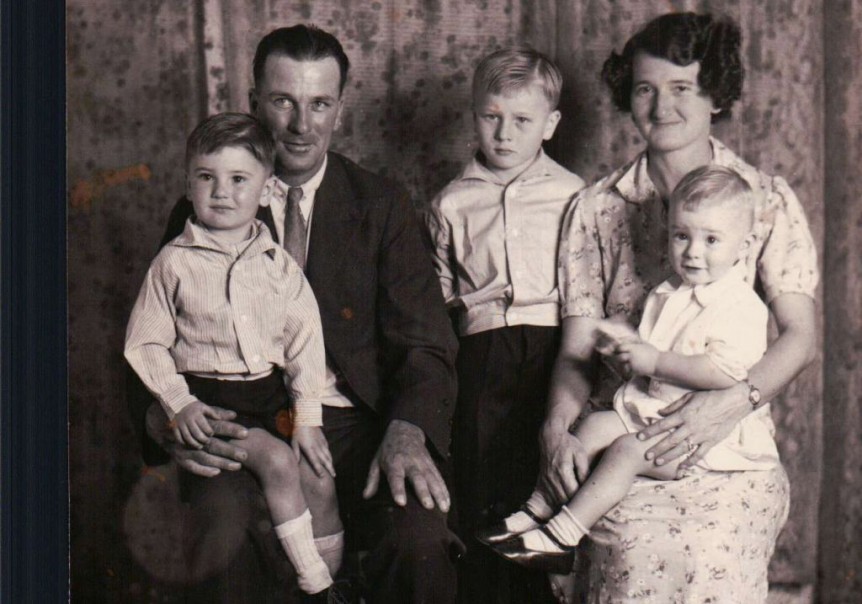
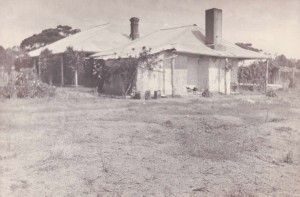

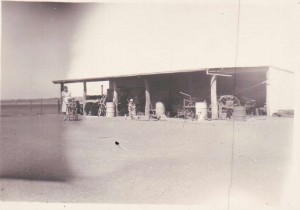
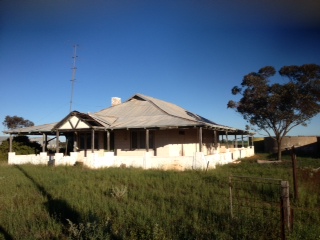



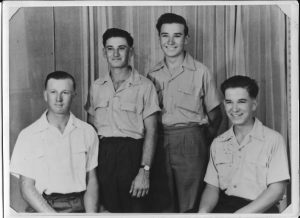
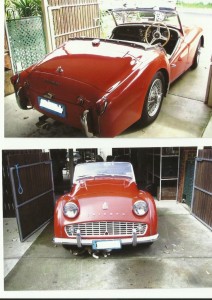
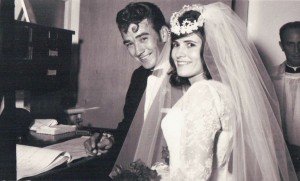
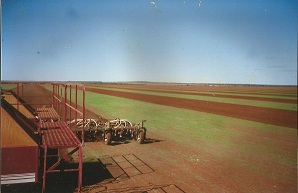
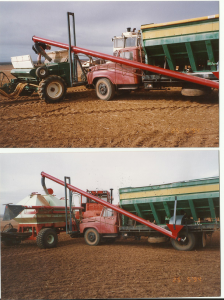
Comments
hi i am looking for Natalie Olman I went to high school at St Brigid’s Lesmurdie